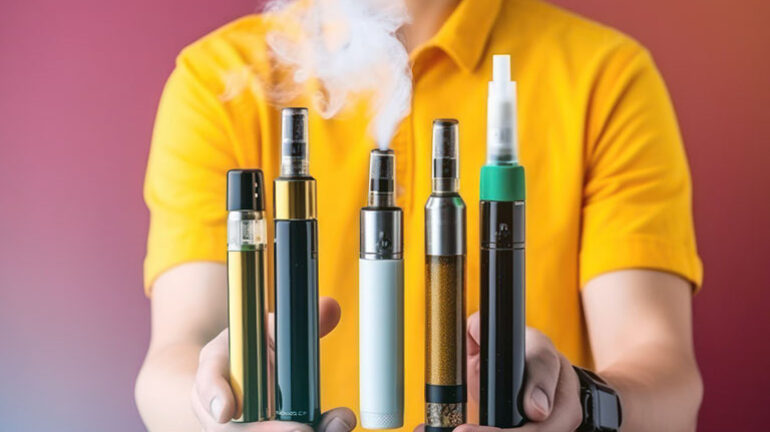
Vaping refers to the act of inhaling and exhaling aerosol, often referred to as vapor, produced by an e-cigarette or similar device.
E-cigarettes were first introduced in China in 2003 and have since gained popularity worldwide.
Vaping devices typically consist of a battery, a heating element, and a cartridge or tank that holds the e-liquid.
E-liquids usually contain nicotine, flavorings, and other chemicals, although some may be nicotine-free.
Vaping is often perceived as a safer alternative to traditional smoking, as it eliminates the combustion process that produces harmful tar and many of the toxic chemicals found in cigarette smoke.
However, vaping is not without risks, as the aerosol produced can contain harmful chemicals such as formaldehyde, acrolein, and acetaldehyde.
Long-term health effects of vaping are still not fully understood, as the industry is relatively new and research is ongoing.
Vaping has become increasingly popular among teenagers and young adults, leading to concerns about nicotine addiction and potential gateway to traditional smoking.
The use of flavored e-liquids, such as fruit and candy flavors, has been criticized for appealing to youth and contributing to the rise in vaping among adolescents.
Some studies suggest that vaping may be an effective smoking cessation tool for adults trying to quit traditional cigarettes, although evidence is mixed.
Regulation of the vaping industry varies widely by country, with some governments implementing strict regulations on sales, marketing, and product labeling.
In the United States, the Food and Drug Administration (FDA) regulates the manufacture, distribution, and marketing of e-cigarettes and other vaping products.
Vaping-related lung injuries, often referred to as EVALI (e-cigarette, or vaping, product use-associated lung injury), emerged as a public health concern in 2019, leading to increased scrutiny of vaping products and regulations.
Vaping devices come in various forms, including cigalikes (resembling traditional cigarettes), vape pens, and advanced personal vaporizers (APVs) or mods.
Some vaping devices allow users to customize factors such as temperature and airflow to tailor their vaping experience.
Vaping culture has spawned a community of enthusiasts who share tips, tricks, and DIY recipes for e-liquids and modifications to vaping devices.
The debate over whether vaping should be allowed in public places continues, with concerns about secondhand exposure to aerosol and potential normalization of smoking behavior.
The World Health Organization (WHO) has called for stricter regulation of vaping products and marketing, citing concerns about their impact on public health.
Vaping has been banned in some places where smoking is prohibited, including indoor spaces, public transportation, and workplaces.
Despite ongoing controversy and concerns, vaping remains a popular alternative to smoking for many individuals seeking a potentially less harmful way to consume nicotine or enjoy flavored vapor.